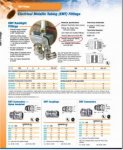Are the gasket (black or yellow O rings) that they call a "knockout seal" supplied with Raintight EMT fittings required by UL or the manufacturers installation instructions when used with outdoor "bell" type boxes or cast conduit bodies that have internal tapered threaded hubs? I am told that using these O rings on boxes with threaded hubs prevents the full seal of the tapered hub or become distorted and useless when threaded "wrench tight" into these types of boxes.
Comparing a EMT "raintight" fitting with a regular compression type I see there is in fact a plastic piece in the compression part of the connector of the raintight ones that is not present in the concrete tight ones. So the O rings may not be the main watertight seal.
I have access to a copy of UL 514B and it does not mention these gaskets either.
The fact that the manufacturer refers to these gaskets as an "included Knockout seal" may infer they are only required for use with knockouts and not threaded hubs.
I looked on several different manufacturers cartons, looked up installation instructions and in the white book and see no indication either way.
Thanks in advance
http://www.cooperindustries.com/con.../resources/pdfs/instruction-sheets/if1655.pdf
The Hubbell Raco catalog states "
All connectors are supplied with a factory
installed knockout seal. No need to add the
expense of buying a gasket separately"
Comparing a EMT "raintight" fitting with a regular compression type I see there is in fact a plastic piece in the compression part of the connector of the raintight ones that is not present in the concrete tight ones. So the O rings may not be the main watertight seal.
I have access to a copy of UL 514B and it does not mention these gaskets either.
The fact that the manufacturer refers to these gaskets as an "included Knockout seal" may infer they are only required for use with knockouts and not threaded hubs.
I looked on several different manufacturers cartons, looked up installation instructions and in the white book and see no indication either way.
Thanks in advance
http://www.cooperindustries.com/con.../resources/pdfs/instruction-sheets/if1655.pdf
The Hubbell Raco catalog states "
All connectors are supplied with a factory
installed knockout seal. No need to add the
expense of buying a gasket separately"



